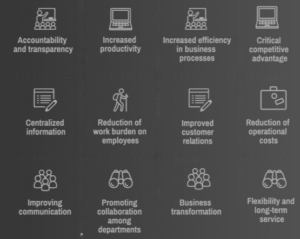- How long do the batteries last in the sensors?
It depends on the type of sensor, the type of reading it takes, the frequency of reporting of the data. Some sensors support up to 10 years on a single battery!
- Is Upande Sensors a type of Internet of Things (IOT)?
Yes, Upande Sensors is a deployment of Internet of Things (IOT). The Internet of things describes physical objects with sensors, processing ability, software, and other technologies that connect and exchange data with other devices and systems over the Internet or other communications networks (Wikipedia).
- Is Upande's Sensor monitoring platform compatible with different communication protocols
Absolutely. UpandeSmartSolutions supports a range of industrial communication protocols, such as Modbus, I2C, 4-20mA, Profibus, M-Bus, RS485, RS232, ensuring compatibility with diverse sensor devices.
- How does the Upande Sensor platform enhance the monitoring capabilities of sensors?
The Upande Sensor platform is an Internet of Things (IOT) platform which acts as a centralized hub, aggregating data from sensors in real-time. This enhances monitoring capabilities, allowing for proactive decision-making and efficient management of connected devices.

Frequently Asked Questions (FAQs)
Everything you want to know about our services
All you need to know about UpandeERP, smart solutions, IoT and HR
Upande Sensors
UpandeERP
- What is Enterprise resource planning (ERP)
Enterprise Resource Planning (ERP) is a business management system that integrates various organizational functions into a unified system. It allows companies to streamline processes and data across departments, improving overall efficiency and decision-making.
ERP is valuable as it offers a centralized platform to manage critical aspects like finance, supply chain, human resources, and customer relations. SMEs often face resource constraints, and ERP solutions help optimize the operations, reduce manual work, and improve collaboration.
In Kenya, UpandeERP stands out as a provider of ERPNext services, offering solutions designed to meet the specific needs of local businesses. It contains modules that address finance, supply chain, and HR, UpandeERP contributes to the growth and sustainability of SMEs by providing them with the tools needed to navigate and thrive in the business landscape.
Read further here: Enterprise Resource Planning, by Investopedia Team, July 12, 2022.
- What is ERP, and how does it benefit businesses?
ERP, or Enterprise Resource Planning, is a software solution that integrates various business processes and functions into a unified system. It benefits businesses by streamlining operations, improving efficiency, and providing real-time visibility into key metrics.
- How does ERP software facilitate better collaboration among different departments?
ERP fosters collaboration by centralizing data and providing a shared platform for departments. This enables seamless communication, reduces data silos, and enhances overall coordination.
- Can ERP be customized to meet specific business needs?
Yes, the UpandeERP system is customizable to adapt to the unique needs of a business. Customization options allow businesses to tailor the software to their specific workflows and requirements.
- How does ERP support financial management and reporting?
ERP includes modules for financial management, automating processes such as accounting and budgeting. It provides accurate and real-time financial data for better decision-making.
- Are ERPs suitable for small businesses, or is it more suitable towards larger enterprises?
Enterprise Resource Planning (ERP) systems are a type of software that integrates various business processes such as finance, HR, manufacturing, and supply chain management into a single, unified system. These systems are designed to help businesses manage their operations more efficiently and effectively and can be utilized by both small businesses and large enterprises.
A key advantage of UpandeERP systems is its scalability. Available in various sizes, ERP solutions can be tailored to meet the specific needs of businesses at any scale. Small businesses can initiate with a basic ERP solution and expand it as they grow, while large enterprises can implement a more intricate ERP system capable of handling complex operations.
For small and medium-sized enterprises (SMEs), ERP solutions can be particularly beneficial. SMEs, often constrained by limited resources, need to operate as efficiently as possible to remain competitive. ERP systems specifically designed for SMEs assist these businesses in streamlining their operations, automating processes, and managing resources more effectively. Examples of companies benefiting from this are Water Starters,

Image showing diverse uses of ERP systems
Improved visibility and control over business operations stand out as a key advantage of an ERP system for SMEs. With an ERP system, SMEs can track resources, manage inventory, and monitor financial performance in real time. This capability enables businesses to make informed decisions, reduce costs, and enhance overall efficiency.
Another noteworthy benefit of UpandeERP systems for SMEs is improved collaboration and communication. These systems break down silos between departments, fostering better collaboration and communication across the organization. This not only helps SMEs work more efficiently but also improves overall productivity.
In conclusion, ERP solutions are valuable tools for businesses of all sizes and can be particularly advantageous for SMEs. These systems aid in managing operations efficiently, enhancing visibility and control over resources, and fostering better collaboration and communication. With the right ERP system, businesses can streamline processes, reduce costs, and improve overall performance.
- How does ERP enhance supply chain management?
ERP optimizes supply chain management by providing real-time visibility into inventory levels, order status, and production schedules. This enables better demand planning, reduces lead times, and improves overall supply chain efficiency.

